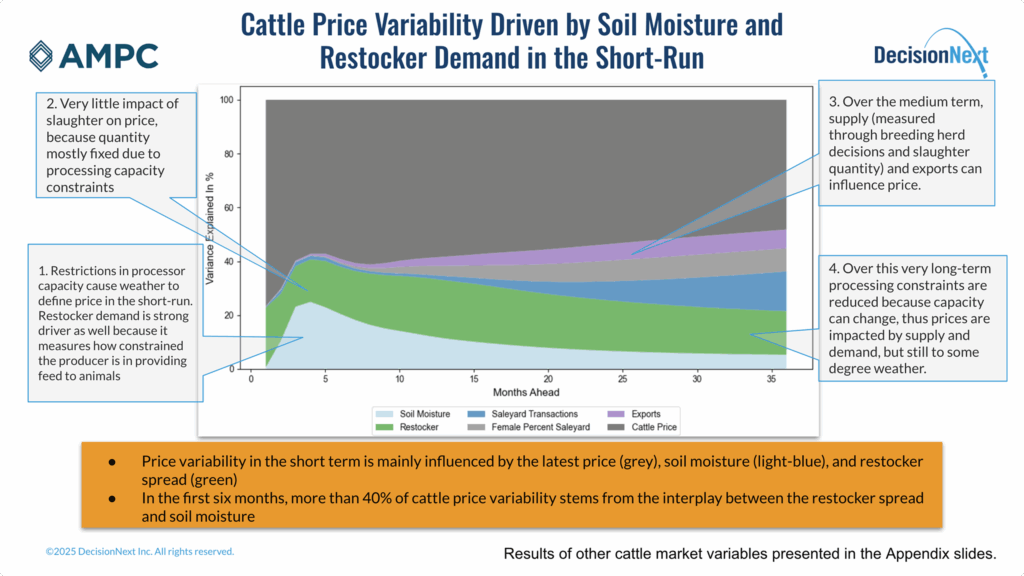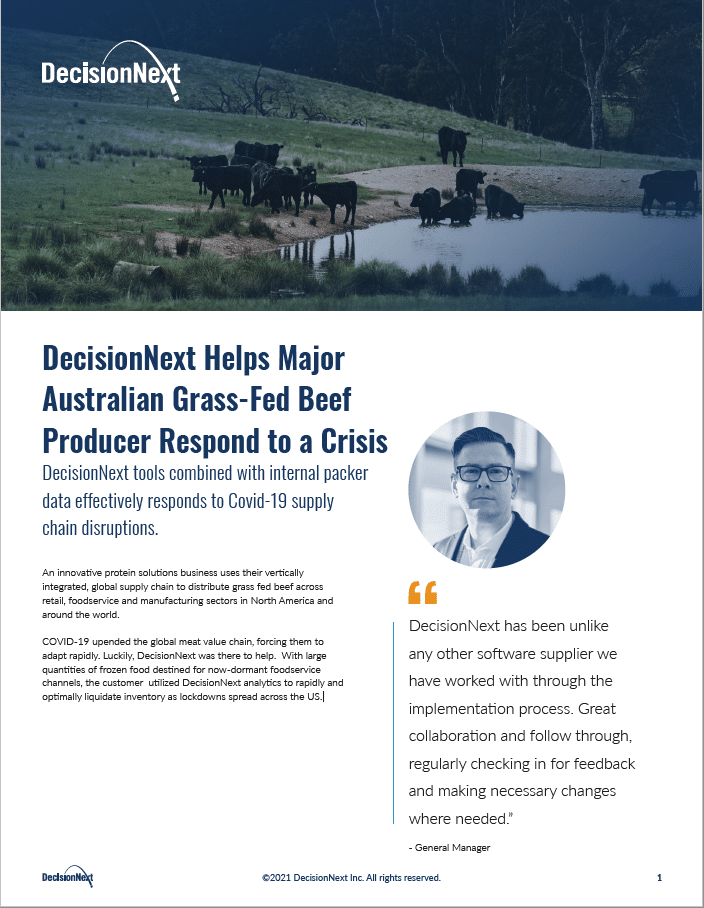Working with the Australian Meat Processor Corporation (AMPC), DecisionNext has compiled a new research report examining the impact of weather on Australian cattle and lamb production. The report is particularly timely, as dry conditions in southern Australia have raised concerns about changes in future cattle supply, as well as the growing role of Australian imports in US markets, given the US’s continued challenges with high cattle and beef prices. This report is uniquely positioned not only to explain how weather impacts production decisions in a production system led predominantly by grass-fed production, but also to measure how those impacts feed into outcomes across the market, from the supply of animals to herd decisions and exports.
This work, which highlights the predominant role of weather in livestock markets, is particularly important in helping to inform not only market participants, such as producers and processors, but also policymakers in understanding the factors driving changes in livestock prices. The meat processing sector in Australia, as well as that of the US, is often in the crosshairs of policymakers because of concerns about the number of firms processing animals relative to the number of producers. This report highlights that competition and supply for animals occur not only at the processing level but also within the production side of the market, as changes in production costs in the grass-fed sector can drive prices substantially higher or lower, depending on the availability and cost of feed.
Using data from Meat & Livestock Australia (MLA) and the Bureau of Meteorology (BOM), the analysis in the report shows that 25% and 22% of cattle and lamb price variability, respectively, is directly attributable to changes in weather (shown below). Including how grass-fed production responds to weather, increases the explainable percent of cattle price variability to 40% in the short run. The results also show a persistent six-month decrease in soil moisture reduces the saleyard cattle price by around 60c/kg. This is because as feed becomes less available, or more costly to put weight on animals, the supply of animals for slaughter increases.

Figure 1 – Chart illustrating cattle price variability driven by soil moisture and re-stocker demand
Alongside analyzing the price variability linked to weather, the statistical techniques discussed in the report provide a visual representation of different weather metrics and their geographical distribution throughout Australia, illustrating their effects on the cattle and lamb markets. Below, Figure 2 uses color shading to depict the influence of soil moisture and region on Australian cattle markets.

Figure 2 – Heat map illustrating cattle markets related to rootzone soil moisture
To learn more about this research and dive into the report please check out the report at AMPC.com.au!










